STRETCH: REFERENCE TO GO
By Olivia H. MillerPhysical Therapy Consultant: Kathy CarrollSTRETCHING... YOU DO IT WHEN YOU WAKE UP IN THE morning. Baseball fans do it in the seventh inning. Animals do it after a nap. Theres nothing like a good stretch.
Its normal, its natural, and it feels great. And more and more people are discovering that stretching is also great for them. Stretch: Reference to Go provides an easy way to incorporate stretching into your life... anywhere, anytime. This comprehensive guide, composed of 50 basic stretches, lists the benefits of each stretch and describes the muscles being targeted. (Anatomical names of the muscles being stretched are also noted unless its obvious from the name of the stretch itself.) The stretches cover four areas of the body and are arranged from the top down: neck, upper body, trunk and lower back, and legs.
You can focus on a particular area or select two or three stretches from each of the four areas. And since Stretch: Reference to Go is portable, you can take it with you to stretch wherever you areat home, at work, on vacation, or in transit.
Why Should We Stretch?
Stretching is the best way to promote and maintain flexibility. As we age, flexibility may decrease due to habitual ways of holding our bodies and lack of muscle use. As a result, the tendons, which connect muscles to bone, are not being given full range of motion and begin to tighten. This reduces flexibility, restricts range of movement, and can lead to muscle imbalance.
A regular program of stretching can counteract this, resulting in increased suppleness and improved coordination. Need another reason to incorporate stretching into your routine? Its easy! You dont need any special equipment or fancy workout clothes. Anyone can do it, no matter what his or her level of activity. Stretching is especially beneficial for people who dont consider themselves naturally flexible and whose muscles are tight. With the help of stretching, office workers wont feel as stiff after a day of endless meetings or hours at the computer; as a bonus, stretching may also help prevent or relieve repetitive stress injuries. Athletes of all types will experience improved performance levels, less muscle soreness, and a better chance of preventing common injuries.
Stretching is also important after exercise to keep muscles from tightening; it prevents injury and allows muscles to return to their normal resting length. In short, whatever age you are or shape youre in, stretching will improve your mobility and flexibility. Youll feel more relaxed, your muscles will be suppler, stiffness and pain will be reduced, and youll enjoy better coordination and increased range of motion.
How to Stretch
To fully appreciate the benefits of stretching, youll need to follow some rules. Stretch regularlythree days a week at minimum. Warm up
before you stretch.
Many of us equate stretching with warming up; for most forms of exercise, including running, golfing, and lifting weights, stretching is part of the warm-up. But you dont want to stretch your muscles before theyve had a chance to warm up. A light warm-up (3 to 5 minutes, enough to increase heart rate and circulation slightly) addressing the areas you intend to stretch will prepare your body and decrease the possibility of injury. If you intend to stretch the upper body and trunk, try gently rolling your shoulders, twisting at the waist, or swinging your arms. If youll be focusing on your legs, walk briskly, jog in place, or pedal on a stationary bike. Make sure each stretch is performed slowly and gently.
Stretch to where you feel mild tension, not pain. Dont over-stretch, bounce, or jerk; the only thing this will improve is your chance of injury. Overstretching and bouncing can cause muscles to tighten rather than relax, which could result in microscopic tearing of the muscle fibers. The muscles become sore and stiffen, leading to loss of elasticitythe opposite of what you want to achieve. Each stretch should be gradual, elongating the connective tissues and muscles. Once you feel the stretch, hold it within the range of time suggested, focusing on the area being stretched.
Repeat the stretch as indicated, gradually moving further until you feel a slight tension, what you might describe as the edge of discomfort. If you go beyond that edge to where you feel pain or your muscles tremble, ease up. Aim for a slow, steady, relaxed stretch that you can sustain without over-exertion. Remember to breathe. Exhale as you go into the stretch, then breathe slowly and rhythmically. Deep inhalations and exhalations may increase the stretch by bringing oxygen to the muscles.
Rapid breathing or holding your breath will increase tension in your body. If that occurs, ease up until your breath returns to normal. Finally, remember that Stretch: Reference to Go is not intended as a substitute for medical advice. If you havent exercised before, are pregnant or elderly, have a chronic condition, or have back or neck problems, consult a medical practitioner before you begin. Dont do any stretch that causes undue pain, shortness of breath, or dizziness. Olivia H. Olivia H.
Miller, a student of yoga for 25 years, specializes in writing about alternative ways to maintain physical, emotional, and spiritual health. Currently residing on Cape Cod, she is the author of Yoga: Reference to Go, also by Chronicle Books. Kathy Carroll is a physical therapist with extensive training in the field of orthopedics. She and her husband own Cape Cod Rehabilitation in Mashpee, Massachusetts.
Recommended Sequences
Put together your own stretching routine, or try some of the recommended sequences below.
FOR AN OVERALL STRETCH:
FOR GOLFERS:
FOR RUNNERS:
FOR OFFICE WORKERS:
FOR GARDENERS:
FOR TRAVELERS:


[ Neck Stretch ] 1
Side-Bending Neck Stretch
 Scalene Stretch
Scalene Stretch Sit comfortably in a straight-backed chair with feet flat on the floor.
FOR AN OVERALL STRETCH:
FOR GOLFERS:
FOR RUNNERS:
FOR OFFICE WORKERS:
FOR GARDENERS:
FOR TRAVELERS:


[ Neck Stretch ] 1
Side-Bending Neck Stretch



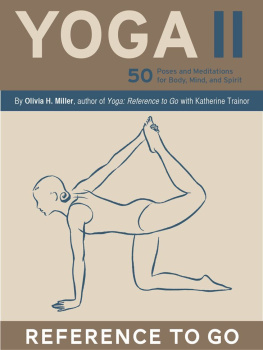
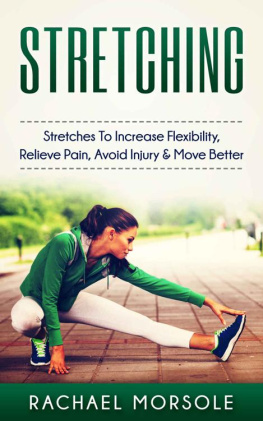
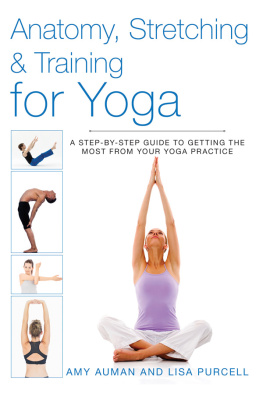
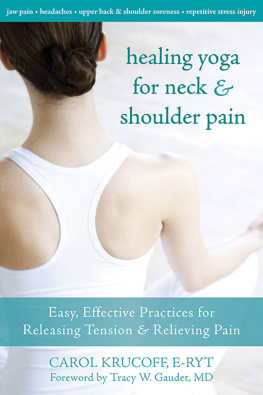
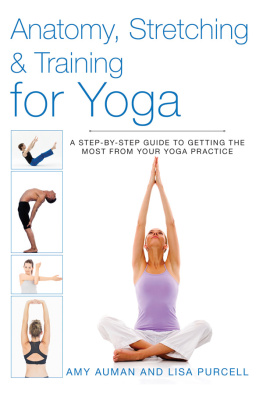
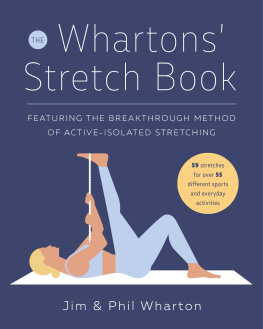
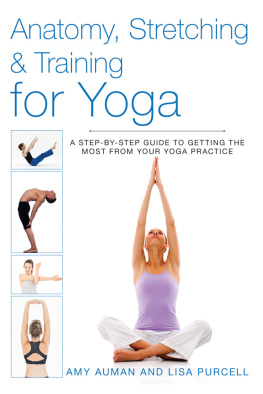
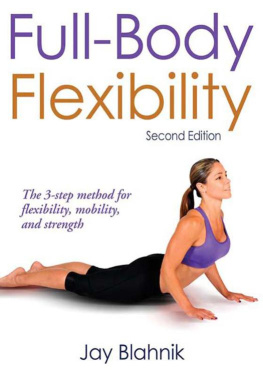
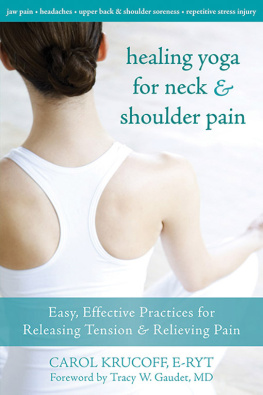


 Scalene Stretch Sit comfortably in a straight-backed chair with feet flat on the floor.
Scalene Stretch Sit comfortably in a straight-backed chair with feet flat on the floor.